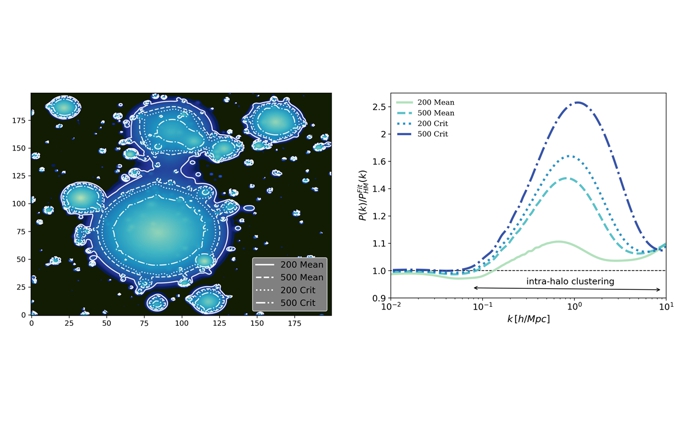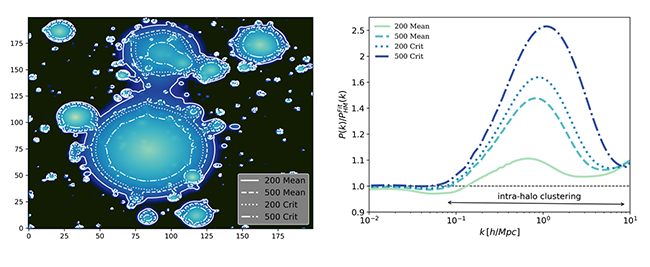Paper on Prediction of non-linear matter power spectrum published

Alberto Acuto, one of the first students that joined LIV.DAT, is moving toward the end of his PhD and he is busy writing his thesis. His project focussed on the use of cosmological simulations and observations to test the accuracy of analytical methods used to investigate large-scale structure cosmology.
A significant time of his PhD project was spent to evaluate the accuracy of the “halo model” formalism, a widely spread tool in cosmological pipelines. The results of this project have now been published in a paper in Monthly Notices of the Royal Astronomical Society. The paper by Alberto, LIV.DAT supervisors Prof Ian McCarthy and Prof Andreea Font, LJMU postdocs Juliana Kwan and Jaime Salcido and PhD student Sam Stafford, presents an in-depth analysis on the accuracy of the halo model method in predicting the non-linear matter power spectrum making use of cosmological simulations.
The knowledge of how the matter (dark and ordinary matter) is distributed in galaxies and on the large-scale structures in the Universe is the main goal for next-generation cosmological observational surveys. To assess the cosmological information obtained through these surveys, one must be able to predict the matter clustering using simulations and analytical methods to a similar accuracy level (below 1%) for given cosmology.
To accomplish this task, cosmological simulations are, among existing options, the most precise and accurate. However, due to the vast cosmological parameter space to sample, analytical methods such as emulator techniques or the halo model formalism are adopted to fill the gaps between simulations. The halo model is a quick and elegant method to perform predictions for the matter clustering but, as an approximated method, carries some uncertainties and (strong) assumptions. In the paper published, the origins of those issues are investigated through BAHAMAS simulations narrowing down the source of uncertainties.
The halo model formalism paints the Universe as composed solely of haloes. The large-scale distribution of matter comes from the correlation signal from and between those objects. One finds that the size of haloes significantly affects the accuracy of the overall predictions, with differences above 50% between the smaller and larger definitions.
This result highlights that using larger volumes to identify particles associated with haloes reflects onto a more realistic reproduction of the large-scale distribution of matter. Nevertheless, this result was expected, however, no one had ever quantified these differences in a self-consistent approach.
This result applies in both collision-less (only dark matter) and hydrodynamical (adding gas and stars) setups allowing us to explore the effect of baryons and galaxy formation processes on the matter power spectrum (so-called baryon suppression). Indeed, making the ratio between the two setups predictions results in an accuracy astonishingly higher (<5%), even where the components differed more than 50%.
This result shows that the halo model formalism might not be accurate enough for the cosmological requirements, but the relative impact of galaxy formation processes can be constrained to an accuracy comparable with next-generation observations.

(left) Illustration of how the different mass definitions (200|500 times the mean or critical density of the Universe) trace the matter inside the haloes and how that reflects onto the accuracy of the matter power spectrum P(k) credit: Prof. Ian G. McCarthy. (right) Power spectra ratio between the simulation results and the halo model predictions, one can see that the 200 Mean definition (solid line) traces better than 15% the matter distribution in the Universe (P(k)), however, the smaller (500 critical) can recover only partially this result.
Further information
A. Acuto, I. G. McCarthy, J. Kwan, J. Salcido, S. G. Stafford, A. S. Font, “The BAHAMAS project: evaluating the accuracy of the halo model in predicting the non-linear matter power spectrum”, Monthly Notices of the Royal Astronomical Society, Volume 508, Issue 3, December 2021, Pages 3519-3534. DOI: https://academic.oup.com/mnras/article/508/3/3519/6381719